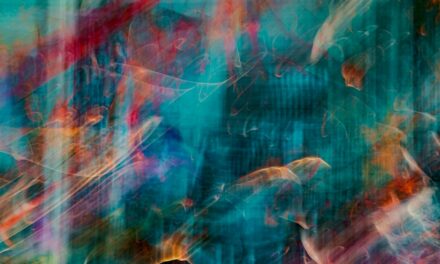Art history is a vast and intricate tapestry woven from the threads of human creativity, culture, and expression. It serves as a mirror reflecting the evolution of societies, their values, and their aspirations throughout the ages. From the earliest cave paintings to contemporary installations, art has been a fundamental means of communication, allowing individuals to convey their thoughts, emotions, and experiences.
The study of art history not only encompasses the examination of artworks themselves but also delves into the contexts in which they were created, including the social, political, and economic factors that influenced artists and their practices. Understanding art history is essential for appreciating the richness of human expression across different cultures and epochs. Each period in art history is characterised by distinctive styles, techniques, and philosophies that reveal the zeitgeist of its time.
By exploring these various movements, we gain insight into how artists have responded to their environments and how their works have shaped and been shaped by the world around them.
Summary
- Art history is the study of visual art and its development over time, encompassing various artistic movements and styles.
- The Renaissance marked a period of renewed interest in art, culture, and humanism, leading to significant advancements in painting, sculpture, and architecture.
- Baroque and Rococo art styles are characterised by their ornate and dramatic features, with a focus on grandeur and opulence.
- Neoclassicism sought to revive the artistic principles of ancient Greece and Rome, emphasising order, symmetry, and rationality.
- Romanticism celebrated individualism, emotion, and nature, rejecting the constraints of neoclassical ideals and embracing a more personal and expressive approach to art.
The Renaissance: A Rebirth of Art and Culture
The Renaissance, spanning roughly from the 14th to the 17th century, marked a profound transformation in European art and culture. This period is often described as a “rebirth” of classical ideals, drawing inspiration from the ancient civilisations of Greece and Rome. Artists such as Leonardo da Vinci, Michelangelo, and Raphael emerged during this time, pushing the boundaries of artistic expression through innovative techniques and a renewed focus on humanism.
The Renaissance was characterised by a shift towards realism, with artists striving to depict the human form and the natural world with unprecedented accuracy. Central to the Renaissance was the concept of humanism, which emphasised the value of individual experience and intellect. This philosophical movement encouraged artists to explore themes of beauty, emotion, and the human condition.
The use of perspective became a hallmark of Renaissance art, allowing for a more three-dimensional representation of space. Additionally, advancements in oil painting techniques enabled artists to achieve greater depth and luminosity in their works. The period also saw the rise of patronage from wealthy families and the Church, which facilitated the creation of monumental artworks that continue to captivate audiences today.
Baroque and Rococo: Ornate and Dramatic Artistic Styles
Following the Renaissance, the Baroque period emerged in the late 16th century and continued into the 18th century. Characterised by its dramatic use of light and shadow, intense emotional expression, and grandiose compositions, Baroque art sought to evoke a sense of awe and wonder. Artists such as Caravaggio and Peter Paul Rubens exemplified this style through their dynamic figures and theatrical scenes.
As the Baroque style evolved, it gave way to Rococo in the early 18th century. Rococo art is often associated with a lighter, more playful aesthetic that emphasised elegance and ornamentation.
Artists like Antoine Watteau and François Boucher embraced themes of love, leisure, and nature, often depicting scenes of aristocratic life in idyllic settings. The Rococo style is characterised by its intricate details, pastel colours, and whimsical motifs, reflecting the tastes of an increasingly affluent society. While Baroque art conveyed grandeur and drama, Rococo offered a more intimate and decorative approach that celebrated beauty in everyday life.
Neoclassicism: Reviving the Classical Art of Ancient Greece and Rome
The late 18th century witnessed the rise of Neoclassicism, a movement that sought to revive the principles of classical art from ancient Greece and Rome. In contrast to the ornate styles of Baroque and Rococo, Neoclassicism emphasised simplicity, symmetry, and rationality. This artistic shift was influenced by Enlightenment ideals that championed reason and civic virtue.
Artists such as Jacques-Louis David played a pivotal role in this movement, creating works that conveyed moral messages through historical narratives. Neoclassical art often featured heroic subjects drawn from mythology or history, reflecting a desire to inspire virtue and patriotism among viewers. The use of clean lines, restrained colour palettes, and balanced compositions became hallmarks of this style.
David’s iconic painting “The Death of Socrates” exemplifies Neoclassicism’s focus on moral integrity and intellectual engagement. As political revolutions swept across Europe, Neoclassicism became associated with ideals of democracy and civic responsibility, further solidifying its significance in art history.
Romanticism: Embracing Emotion and Individualism in Art
In reaction to the rationalism of Neoclassicism, Romanticism emerged in the late 18th century as a celebration of emotion, imagination, and individual experience. This movement sought to break free from traditional artistic conventions by prioritising personal expression over adherence to established norms. Romantic artists such as Caspar David Friedrich and Eugène Delacroix explored themes of nature, spirituality, and human emotion in their works, often conveying a sense of awe or melancholy.
Romanticism was characterised by its emphasis on the sublime—the idea that nature could evoke both beauty and terror simultaneously. Artists often depicted dramatic landscapes or historical events infused with emotional intensity. Delacroix’s “Liberty Leading the People” serves as a powerful example of Romanticism’s focus on individual agency and revolutionary spirit.
The movement also fostered a fascination with folklore, mythology, and exotic cultures, reflecting a growing interest in the diverse experiences of humanity. Through its embrace of emotion and individualism, Romanticism laid the groundwork for subsequent artistic movements that would continue to challenge conventions.
Impressionism: Capturing the Moment and the Play of Light
The late 19th century heralded a radical departure from traditional artistic practices with the advent of Impressionism. This movement sought to capture fleeting moments in time through innovative techniques that emphasised light and colour over precise detail. Artists such as Claude Monet, Pierre-Auguste Renoir, and Edgar Degas broke away from established norms by painting en plein air (outdoors) to capture the effects of natural light on their subjects.
Impressionist works are characterised by loose brushwork, vibrant colour palettes, and an emphasis on everyday scenes—whether it be bustling city streets or tranquil landscapes. Monet’s “Impression, Sunrise,” which gave the movement its name, exemplifies this approach by capturing the ephemeral qualities of light at dawn. The Impressionists sought to convey their immediate perceptions rather than create idealised representations; this focus on spontaneity marked a significant shift in artistic practice.
Despite facing initial criticism from traditionalists, Impressionism ultimately paved the way for modern art movements by challenging viewers’ expectations regarding representation.
Cubism and Abstract Art: Breaking the Rules and Redefining Reality
As the 20th century unfolded, artists began to explore new ways of representing reality through movements such as Cubism and Abstract Art. Pioneered by Pablo Picasso and Georges Braque in the early 1900s, Cubism sought to deconstruct objects into geometric forms while presenting multiple perspectives simultaneously. This radical approach challenged conventional notions of space and representation, inviting viewers to engage with artworks on a deeper intellectual level.
Cubism marked a departure from traditional narrative-driven art; instead, it focused on form and structure as primary elements of composition. Picasso’s “Les Demoiselles d’Avignon” exemplifies this shift by presenting figures fragmented into angular shapes that defy conventional representation. As Cubism evolved into various sub-styles—such as Synthetic Cubism—artists began incorporating mixed media elements into their works, further blurring the boundaries between painting and sculpture.
Simultaneously, Abstract Art emerged as a movement that prioritised colour, form, and line over representational content. Artists like Wassily Kandinsky sought to express emotions through non-representational forms that resonated with viewers on an intuitive level. This exploration of abstraction opened new avenues for artistic expression while challenging traditional definitions of art itself.
Modernism and Postmodernism: Challenging Tradition and Embracing Diversity
The 20th century witnessed an explosion of artistic experimentation underpinned by Modernism—a movement that sought to break away from historical precedents while embracing innovation across various disciplines. Modernist artists rejected established norms in favour of new materials, techniques, and ideas that reflected contemporary life. Movements such as Surrealism, Dadaism, and Futurism emerged during this period as artists grappled with themes of identity, technology, and societal change.
Postmodernism followed as a reaction against Modernist ideals; it questioned notions of originality while embracing diversity in artistic expression. Postmodern artists often employed irony, parody, and pastiche to challenge established narratives within art history. Figures like Andy Warhol blurred boundaries between high art and popular culture through his iconic works that celebrated consumerism while critiquing it simultaneously.
Both Modernism and Postmodernism have left an indelible mark on contemporary art practices today—encouraging artists to explore new mediums while engaging with complex social issues ranging from identity politics to environmental concerns. As we navigate this ever-evolving landscape of artistic expression, it becomes clear that art history is not merely a chronicle of styles but rather an ongoing dialogue that reflects humanity’s diverse experiences across time. In conclusion, art history serves as a testament to humanity’s creative spirit—a journey through time that reveals our collective aspirations, struggles, and triumphs.
Each artistic movement has contributed uniquely to this narrative while challenging us to reconsider our understanding of beauty, meaning, and expression within our world today.
For further exploration into the world of art history, consider delving into the article “Artistic Soulscape”. This piece offers a unique perspective on the emotional and spiritual aspects of artistic movements throughout history, providing a deeper understanding of the connection between art and the human experience. By examining the intersection of creativity and the soul, readers can gain a more profound appreciation for the masterpieces that have shaped our cultural landscape.
FAQs
What is art history?
Art history is the study of visual art and its development over time. It involves the analysis, interpretation, and understanding of art movements, styles, and the cultural and historical contexts in which they were created.
What are artistic movements?
Artistic movements are periods of time in which artists shared a similar style, philosophy, or approach to creating art. These movements often reflect the social, political, and cultural changes of the time and can be identified by specific characteristics and themes.
What are some examples of artistic movements from the Renaissance to Modern era?
Some examples of artistic movements from the Renaissance to Modern era include the Renaissance, Baroque, Rococo, Neoclassicism, Romanticism, Realism, Impressionism, Post-Impressionism, Cubism, Surrealism, and Abstract Expressionism.
How did artistic movements influence the development of art?
Artistic movements influenced the development of art by challenging traditional techniques, exploring new subject matter, and pushing the boundaries of artistic expression. They also sparked debates about the purpose and meaning of art, leading to the evolution of different styles and approaches.
Why is it important to study artistic movements in art history?
Studying artistic movements in art history is important because it provides insight into the cultural, social, and political contexts in which art was created. It also helps us understand the evolution of artistic styles and the impact of art on society. Additionally, it allows us to appreciate the diversity and richness of artistic expression throughout history.


